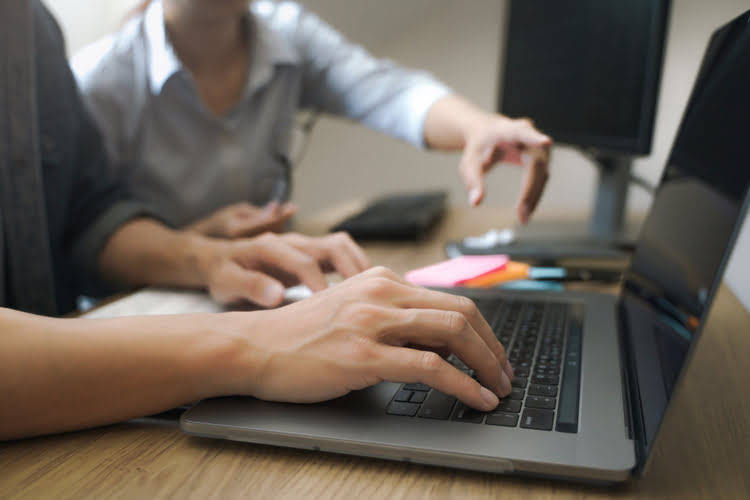Balance Sheet: Explanation, Components, and Examples
Content

The balance sheet is just a more detailed version of the fundamental accounting equation—also known as the balance sheet formula—which includes assets, liabilities, and shareholders’ equity. Liabilities are claims on the company assets by other firms or people. The bank has a claim to https://www.bookstime.com/what-is-the-accounting-equation the business building or land that is mortgaged. Liabilities are usually shown before equity in the balance sheet equation because liabilities must have to be repaid before owners’ claims. The financial statement only captures the financial position of a company on a specific day.

Employees usually prefer knowing their jobs are secure and that the company they are working for is in good health. As noted above, you can find information accounting equation about assets, liabilities, and shareholder equity on a company’s balance sheet. The assets should always equal the liabilities and shareholder equity.
Limitations of a Balance Sheet
As companies recover accounts receivables, this account decreases, and cash increases by the same amount. This form is more of a traditional report that is issued by companies. Assets are always present first followed by liabilities and equity.
- Without knowing which receivables a company is likely to actually receive, a company must make estimates and reflect their best guess as part of the balance sheet.
- Some companies will class out their PP&E by the different types of assets, such as Land, Building, and various types of Equipment.
- Cash Equivalents are also lumped under this line item and include assets that have short-term maturities under three months or assets that the company can liquidate on short notice, such as marketable securities.
- Last, a balance sheet is subject to several areas of professional judgement that may materially impact the report.
- Liabilities are what a company owes to others—creditors, suppliers, tax authorities, employees, etc.
- Different accounting systems and ways of dealing with depreciation and inventories will also change the figures posted to a balance sheet.
- Unlike the income statement, the balance sheet does not report activities over a period of time.
A company may look at its balance sheet to measure risk, make sure it has enough cash on hand, and evaluate how it wants to raise more capital (through debt or equity). In this example, Apple’s total assets of $323.8 billion is segregated towards the top of the report. This asset section is broken into current assets and non-current assets, and each of these categories is broken into more specific accounts. A brief review of Apple’s assets shows that their cash on hand decreased, yet their non-current assets increased. Liabilities and equity make up the right side of the balance sheet and cover the financial side of the company.
Company
All applicants must be at least 18 years of age, proficient in English, and committed to learning and engaging with fellow participants throughout the program. No, all of our programs are 100 percent online, and available to participants regardless of their location. We offer self-paced programs (with weekly deadlines) on the HBS Online course platform.
- Double-entry accounting uses the accounting equation to show the relationship between assets, liabilities, and equity.
- Today, there are numerous sources of independent stock research, online and in print, which can do the “number crunching” for you.
- Think of retained earnings as savings, since it represents the total profits that have been saved and put aside (or “retained”) for future use.
- Its liabilities (specifically, the long-term debt account) will also increase by $4,000, balancing the two sides of the equation.
For instance, if a business takes a loan from a bank, the borrowed money will be reflected in its balance sheet as both an increase in the company’s assets and an increase in its loan liability. A balance sheet represents a company’s financial position for one day at its fiscal year end, for example, the last day of its accounting period, which can differ from our more familiar calendar year. Companies typically select an ending period that corresponds to a time when their business activities have reached the lowest point in their annual cycle, which is referred to as their natural business year. Shareholder equity is the money attributable to the owners of a business or its shareholders. It is also known as net assets since it is equivalent to the total assets of a company minus its liabilities or the debt it owes to non-shareholders.
Report Format Balance Sheet
In contrast, the income and cash flow statements reflect a company’s operations for its whole fiscal year—365 days. This practice is referred to as “averaging,” and involves taking the year-end (2019 and 2020) figures—let’s say for total assets—and adding them together, and dividing the total by two. This exercise gives us a rough but useful approximation of a balance sheet amount for the whole year 2020, which is what the income statement number, let’s say net income, represents. In our example, the number for total assets at year-end 2020 would overstate the amount and distort the return on assets ratio (net income/total assets). A balance sheet explains the financial position of a company at a specific point in time. As opposed to an income statement which reports financial information over a period of time, a balance sheet is used to determine the health of a company on a specific day.
Different transactions impact owner’s equity in the expanded accounting equation. Revenue increases owner’s equity, while owner’s draws and expenses (e.g., rent payments) decrease owner’s equity. The expanded accounting equation shows the relationship between your balance sheet and income statement. Revenue and owner contributions are the two primary sources that create equity. In this form, it is easier to highlight the relationship between shareholder’s equity and debt (liabilities). As you can see, shareholder’s equity is the remainder after liabilities have been subtracted from assets.
Looking at a single balance sheet by itself may make it difficult to extract whether a company is performing well. For example, imagine a company reports $1,000,000 of cash on hand at the end of the month. Without context, a comparative point, knowledge of its previous cash balance, and an understanding of industry operating demands, knowing how much cash on hand a company has yields limited value. The income statement and statement of cash flows also provide valuable context for assessing a company’s finances, as do any notes or addenda in an earnings report that might refer back to the balance sheet.
A balance sheet is one of the primary statements used to determine the net worth of a company and get a quick overview of its financial health. The ability to read and understand a balance sheet is a crucial skill for anyone involved in business, but it’s one that many people lack. It shows how either debt or equity finances every asset, and that is how the balance sheet equation is formed. Within the balance sheet, the items noted below should be classified as current assets.
